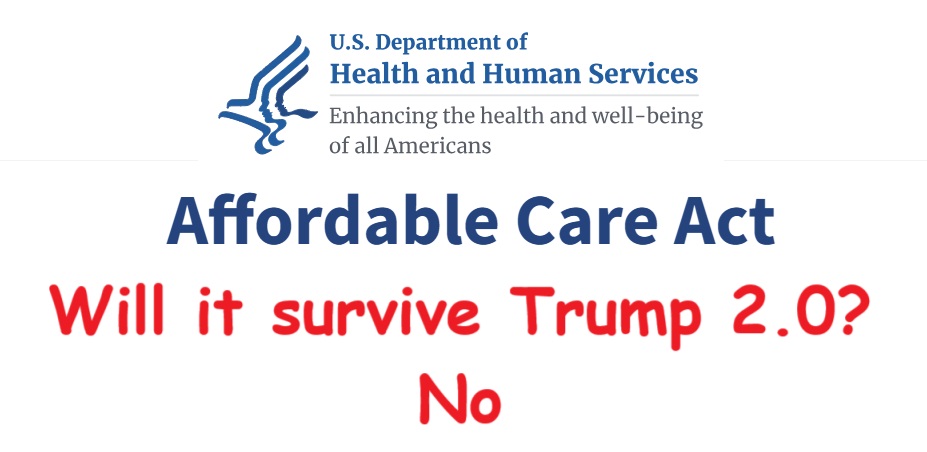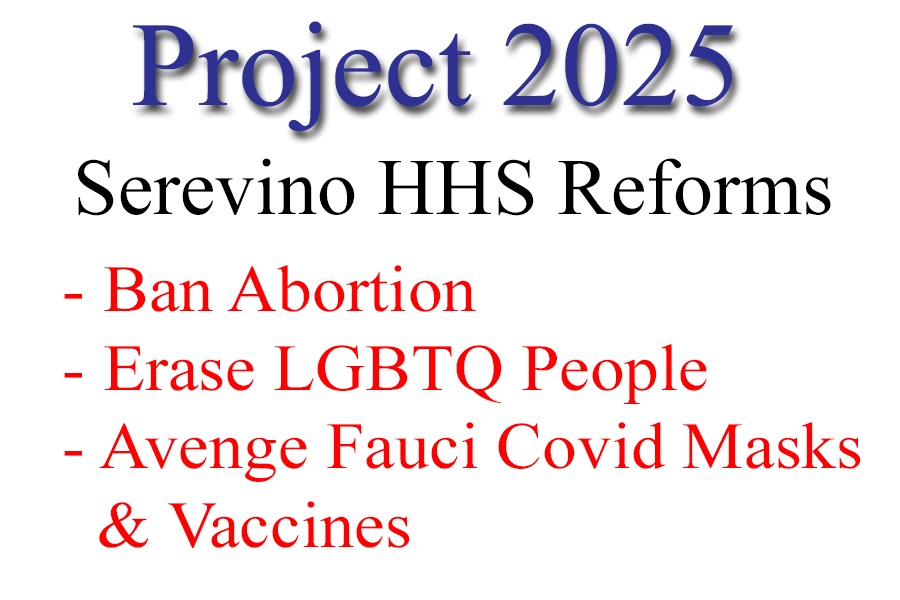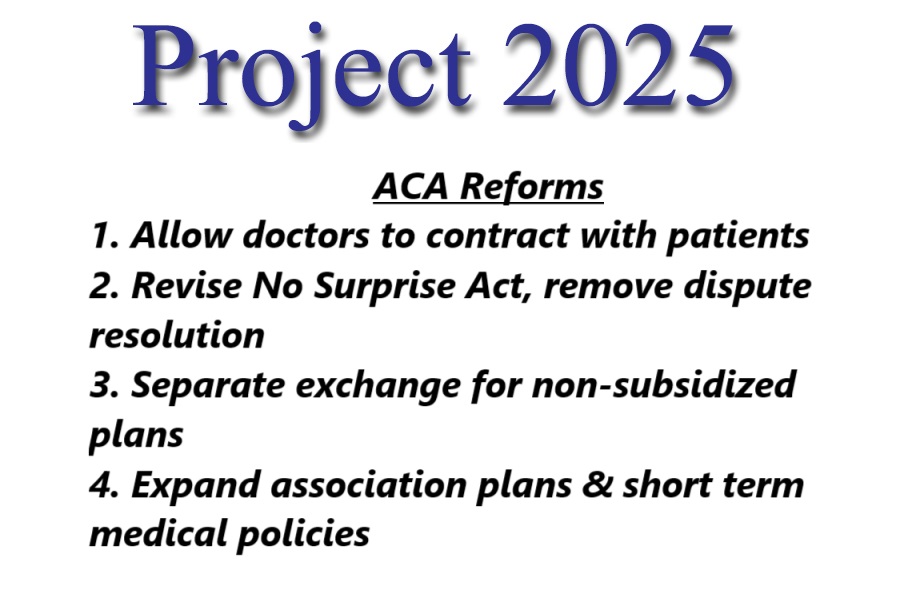The question on many people’s minds is whether the Affordable Care Act (aka Obamacare) will survive the Trump’s second presidency. From my perspective, the short answer is no. The ACA will be abolished or significantly changed for 2026. This means that you have to maximize your ACA health plan fully in 2025 because it may not be available in 2026.

Obamacare ACA Health Insurance Market win NOT Survive Trump
I base my predictions on the demise of the ACA on a couple of observations. First, Donald Trump really doesn’t care about affordable health insurance or quality health care. He has government sponsored Medicare that won’t change. Trump’s appointees will have government sponsored employer health insurance and will not be affected by any dramatic change to the ACA.
Second, Trump’s appointees have already written their plan for an overhaul of the ACA in the Project 2025 document. Chapter 14 on reimagining the Department of Health and Human Services outlines the plans attacking many of HHS programs. Oddly, there is not much in the chapter about the ACA. There is some vague language regarding doctor-patient contracts, removing arbitration, setting up a second market for non-subsidized health plans, and expanding short term medical plans.

Project 2025 will Dictate Conservative Health Care Plans
However, there is a laundry list of grievances regarding equality, abortion, and LGBTQ people that the author wants to correct. A big focus of the chapter is on abolishing abortion by any means necessary. The author, Roger Severino, also want to eliminate any health care for LGBT individuals and ensuring the government can’t contain contagious viral outbreaks by mandating people wearing masks.
My prediction is that subsidized individual and family plans will continue in some form in 2026. We must remember that any plan eligible to receive the Advance Premium Tax Credit (APTC) subsidy must include the minimum essential benefits established by the federal government.
- Outpatient care without being admitted to hospital
- Emergency services
- Hospitalization
- Pregnancy, maternity, newborn care
- Mental health and substance abuse
- Prescription medications
- Physical therapy
- Laboratory services
- Preventive
- Pediatric dental and vision
Subsequent coverage benefits included birth control and breastfeeding coverage.
Additionally, the health plans offered, in order to be eligible for the subsidy had to meet other standards.
- No pre-existing condition clauses
- No cap on the health plan’s coverage for health care costs
- Health plans offered in metal tier of Bronze, Silver, Gold, and Platinum levels
- Medical Loss Ratio mandating health plans had to spend 80 percent of premium dollars on health care an innovation.
Project 2025 outlined how conservative Republicans want to radically alter the Department of Health and Human Services (HHS), the bureaucracy that manages the Affordable Care Act. Chapter 14 of Project 2025 was written by a former HHS employee under the Trump administration, Roger Severino. His main points on changing the ACA were minimal and vague.
- Allow doctors to contract with patients
- Revise No Surprise Act, remove dispute resolution, binding arbitration
- Create a separate marketplace exchange for non-subsidized health plans
- Expand association and short-term medical plans

Most of the chapter on the HHS was devoted to ways to ban abortion and avenge grievances.
- Ban all abortion
- Erase LGBTQ people from any mention at HHS
- Avenge the Fauci Covid mask and vaccine mandates
Subsidized Health Insurance Will Continue with Gaps and Caps
I do believe that federally subsidized individual and family health insurance will survive in some form. However, in order for a health plan to be eligible for subsidies it will have to meet the conservative culturally influenced restrictions of Serevino. This will include restrictions and prohibitions on health care services and acknowledgements that Trump and Project 2025 are opposed to.
- No coverage for abortion services
- No coverage for LGBT individuals with an emphasis on transgender health care services
- Religious exemptions to allow providers to discriminate against people and related services

When surveying the cultural grievances of Project 2025 coupled with an open market approach to health insurance, we can anticipate drastically different types of health insurance, subsidized and non-subsidized, offered to individuals and families.
- Lower subsidies for the health plans
- More junk plans with pre-existing conditions
- Plans with gaps that don’t cover certain services like maternity, mental health, or prescription medications. The sort of plans offered before the ACA was implemented
- Plans with caps on how much the health plan must spend for health care for the plan member

We will see some health plans not be offered if there is a parallel marketplace with non-subsidized plans that have gaps and caps. Healthy people will migrate to the lower cost health plans leaving people who need health care services in the subsidized plans. This will cause the death spiral of the health plan as claims expenses increase with shrinking premium dollars. As the premiums go up to cover the costs, people will leave the health plan, and it will collapse. We already see this with pre-ACA grandfathered plans that must be closed because there are too few people in the plan paying premiums to cover expenses.
Expanded Medicaid will most likely be abolished. In California, this will leave millions of people, with very low income, without health insurance. It will be very hard for states who have relied on the expanded Medicaid of the ACA to offer health insurance to low-income families and find a way to back fill the coverage.
The big shock to the health insurance market will occur in 2026. In 2025, Republicans will have the opportunity to repeal the ACA and the HHS can drastically alter its design. This means that decent health plans with the subsidies are still available for 2025. My recommendation is to get a good ACA health plan with the subsidies in 2025 before they are eliminated in 2026.
My video on how subsidized health insurance will change in 2026


